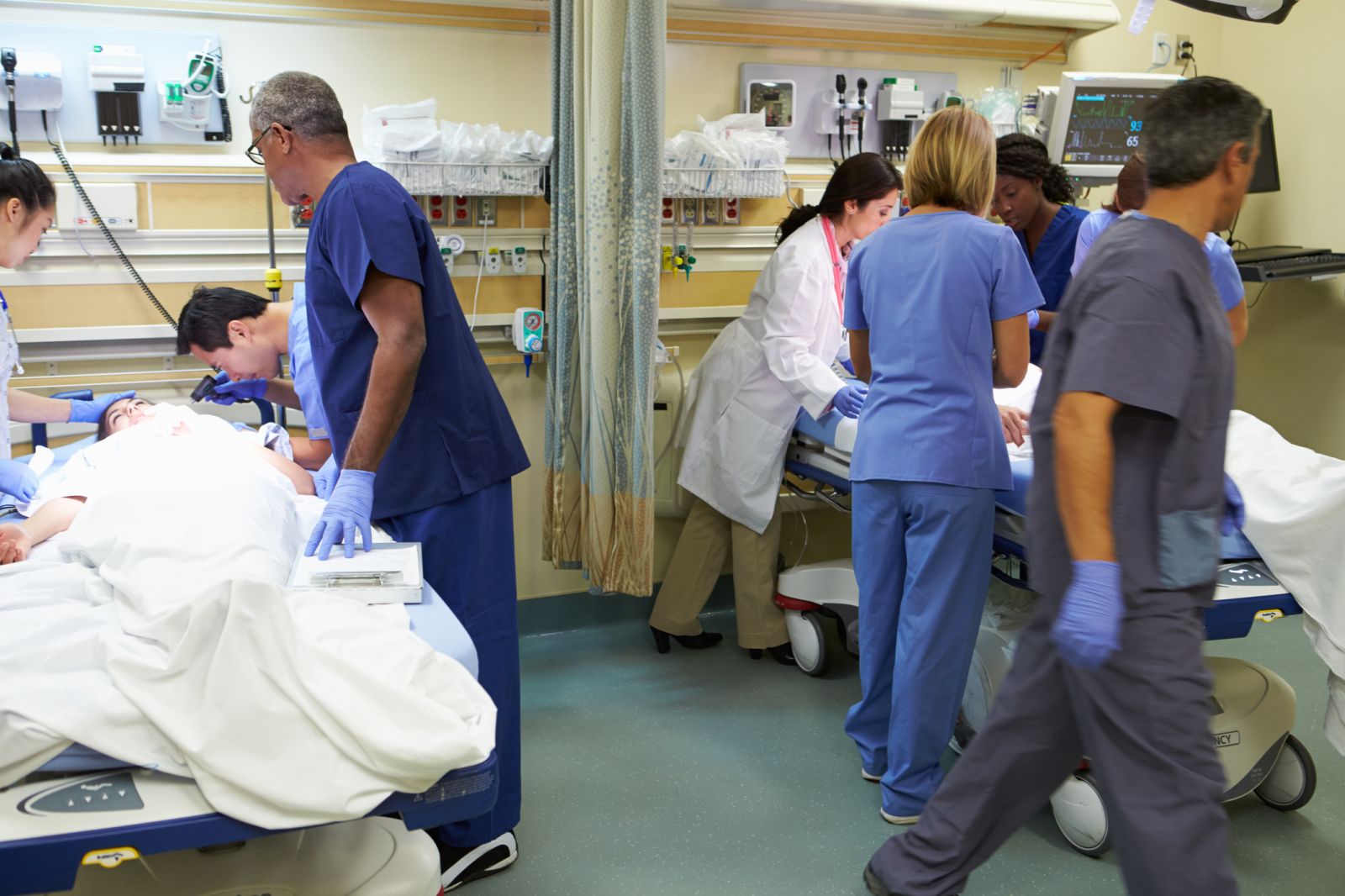Dr. Chanu Rhee explores the science of sepsis diagnosis and treatment

Chanu Rhee, M.D., M.P.H., is an infectious disease and critical care physician at Brigham and Women’s Hospital in Boston. His research focus is the epidemiology, surveillance, diagnosis, treatment and prevention of sepsis and infections in critically ill patients. He recently completed a CDC-funded, multicenter collaborative that developed an objective surveillance definition for sepsis based on clinical data and estimated the U.S. national burden of sepsis by applying this definition to electronic health record data from over 400 hospitals and 7 datasets. Dr. Rhee is a member of the Massachusetts Sepsis Consortium.
Betsy Lehman Center: How much do we understand about whether the incidence of sepsis is increasing and why?
Dr. Rhee: Most epidemiologic studies of sepsis suggest that its incidence is rising over time. That’s been attributed to factors such as an aging population, increasing use of immunosuppressive drugs and chemotherapy for patients with cancer, more surgical procedures and more drug resistant organisms. While these factors are certainly plausible, we may also simply be diagnosing sepsis more often than in the past. Indeed, this is what my colleagues and I have found in our research over the past few years.
Betsy Lehman Center: Based on that research, the CDC has issued a new toolkit that offers hospitals a more reliable way to measure and track sepsis. How is the new toolkit an improvement over what hospitals have done in the past?
Dr. Rhee: Most hospitals track their sepsis rates and outcomes using discharge diagnosis codes from administrative data because it’s readily available and easy to analyze. However, our research has shown that trends from administrative data are biased because practices for diagnosis and coding have changed over time. With all the national and global attention on sepsis, clinicians are becoming more aware, while also being encouraged to screen for sepsis more aggressively and code for it more diligently to maximize reimbursement. The net effect is that many patients who previously would not have been labeled with sepsis are now being counted, which can create misleading impressions of rising sepsis incidence and declining mortality rates.
Automated surveillance allows hospitals to track all patients with sepsis rather than the small sample required by the CMS SEP-1 measure.
Some hospitals track sepsis using prospective registries of patients who trigger sepsis screens, which is more rigorous than using administrative data but is still subject to bias. In addition, most hospitals now track the quality of sepsis care with the Centers for Medicare and Medicaid Services (CMS) SEP-1 measure, which requires hospital abstractors to manually review a sample of sepsis cases every quarter. While this provides important insight into quality of care, the abstraction is very time consuming and can be done only on a small subset of patients.
Realizing that hospitals and policy makers need a more objective measure to track progress and inform further improvements, the CDC created the “Adult Sepsis Event” toolkit. It helps hospitals measure sepsis rates and outcomes with standardized clinical criteria that can be automated using routine electronic health record (EHR) data. The toolkit identifies sepsis by using clinical indicators of presumed infection and concurrent organ dysfunction rather than diagnosis codes. Because the criteria are clear and reproducible, they should be more objective than tracking sepsis diagnosis codes. Since the criteria can be automated with EHR data, Adult Sepsis Event surveillance should also be easier to maintain than registries or retrospective audits. Automated surveillance also allows hospitals to track all patients with sepsis rather than the small sample required by the CMS SEP-1 measure.

Betsy Lehman Center: What risks are associated with missing a sepsis diagnosis and, on the other hand, treating patients if they don’t actually have it? How do you try to mitigate those risks in practice?
Dr. Rhee: Sepsis is a medical emergency where every hour matters, so delays in diagnosis can lead to an increased risk of morbidity and death. However, sepsis can be hard to recognize as it is often unclear if patients are infected and if organ dysfunction is due to infection. Because of that uncertainty, many patients get treated for possible sepsis when they are not actually infected. Antibiotics are not harmless. They can cause adverse events and increase the risk of antibiotic resistance and Clostridium difficile infection. Unnecessary fluid administration can also be harmful. And of course, misdiagnosing a patient with sepsis and not treating their true condition can be devastating.
In practice, clinicians weigh these risks and benefits every day for their patients. For patients who are severely ill and where sepsis is a possibility, clinicians generally administer immediate antibiotics even if the diagnosis is not certain, because the potential downside of not treating is so high. But clinicians must also be careful about anchoring on a diagnosis of sepsis. They need to be vigilant for other possibilities as well. I think we also need to pay more attention to antibiotic de-escalation. When antibiotics are started for possible sepsis, but a non-infectious cause is later found, clinicians need to be aggressive about stopping antibiotics as soon as possible.
Betsy Lehman Center: Sepsis is a hot topic of debate and research. What are the frontiers in sepsis research? What are the most important questions that still need to be asked and understood?
Dr. Rhee: First, in terms of recognizing sepsis, improvements in diagnostic tests for sepsis and for infections in general will be immensely helpful, particularly tests that give rapid results at the point of care. There is also a lot of interest in developing more sensitive and specific clinical criteria to detect early sepsis.
For managing sepsis, we still need to figure out the optimal balance between early antibiotics and potential harm from overtreatment. While we know that patients with septic shock require immediate antibiotics, the evidence is not quite as strong for sepsis with other types of organ dysfunction, and figuring out which types of patients need immediate antibiotics and which can wait a little longer while undergoing diagnostic testing will be important.
I am hopeful that ongoing research will lead to more targeted sepsis therapies.
Another important area of investigation is around the optimal strategy for administering fluids in patients with sepsis. Currently, guidelines and policies recommend aggressive quantities of fluid early on, but not all patients require that much fluid. In fact, aggressive fluid administration is potentially harmful in patients with heart disease or other comorbidities. Finally, I am hopeful that ongoing research will lead to more targeted sepsis therapies. After decades of research, there is still no specific anti-sepsis drug, and the mainstays of treatment remains early recognition, administration of antibiotics and controlling the source of infection.
Betsy Lehman Center: What do you think it will take to make real progress on sepsis outcomes in Massachusetts?
Dr. Rhee: I believe there is plenty of room for hospitals to improve their sepsis care by increasing awareness and compliance with best practices, particularly implementing protocols to help identify potentially septic patients and administer early antibiotics. But I also believe that factors outside of the hospital setting are very important and could make even more of a difference. That includes better preventive care — vaccinations, for example — and management of underlying conditions that predispose to sepsis, such as diabetes, cancer, and other chronic diseases. Increasing public awareness of the symptoms of sepsis and the need to seek medical care urgently will also be important. Ideally, patients won’t be so severely ill when they do present to the hospital with sepsis.